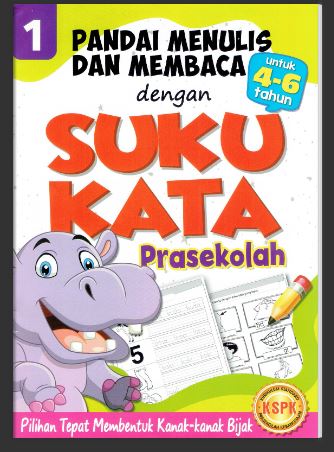‘Suku Kata Prasekolah’ PDF Quick download link is given at the bottom of this article. You can see the PDF demo, size of the PDF, page numbers, and direct download Free PDF of ‘Malay(language) Books’ using the download button.
Suku Kata Prasekolah PDF Free Download

Malay(language) Books PDF
For writing their own language the Malays have borrowed their characters from the Arabs.
Those who intend to make a thorough study of the Malay language and literature will there- fore find it necessary to learn to read the Arabic character.
But for the majority of those who wish to learn the rudiments of the Malay language the difficulty of obtaining any fluency in reading a new character often appears so great as even to discourage them from making a beginning.
For this reason the Malay words in this grammar are all printed in Roman letters.
The sys- tem of romanising adopted is the same as has been used in Shellabear’s Vocabulary, the Triglot Vocabulary, the Straits Vocabulary, Straits Dialogues, Malay and English School Primer, and all the other Malay publications of the American Mission Press.
This system is essentially the same as that which has been universally adopted for romanising the Amoy and Swatow and other dialects of the Chinese language, and is sometimes called the Rational System.
In addition to the above there is in Malay, as in nearly all oriental languages, another simple vowel sound which is often called “the short vowel sound.” In the different systems of romanising, this short vowel sound has been variously represent- ed by a, a, e, č, u, and й, but all of these different methods of representing this vowel sound are open to the great objection that they mislead both Europeans and natives into giving it an incorrect pronunciation.
Experience has shown that the best way to spell words containing the short vowel sound, with a view to helping the student to a correct pronunciation, is to omit the vowel altogether.
This omission of the short vowel is the peculiar feature of the system of romanising used in this grammar.
The exact sound of this “short vowel” can only be learnt by ear; it does not occur in any English word of one sylla- ble, but is almost identical with the half-vowel sound in the first syllable of such words as “machine,” and “balloon.”
When two consonants come together without a vowel between, the first consonant must be considered as having the short or inherent vowel sound, and is therefore sounded separately, as, l-kas, t-pi, b-bal, etc.
The double consonants ch, kh, sh, ng, and ny are of course exceptions to this rule, as they stand for single sounds.
Where the single consonants k and h, or s and I would come together, the vowel a is inserted to avoid confusion with the double consonants kh, sh, as in kahandak, sahaja, etc.; in the word negri, however, it has been thought best to retain the conventional method of spelling with an e.
When three con- sonants come together, the first two usually form a closed sylla- ble, and the third commences the second syllable, as in the words mm-baiki, rn-dah, pn-ja-ra; in a few cases, however, each consonant must be given its inherent vowel sound, as, m-l-top, p-n-bus, s-d-kah, but such words are so few in number that they present very little difficulty.
| Language | Malay |
| No. of Pages | 33 |
| PDF Size | 0.3 MB |
| Category | Education |
| Source/Credits | fliphtml5.com |
Suku Kata Prasekolah PDF Free Download
